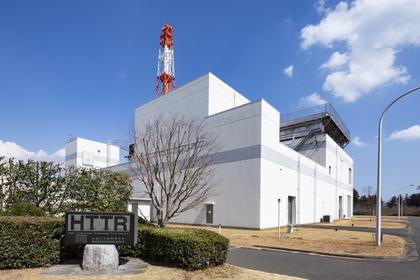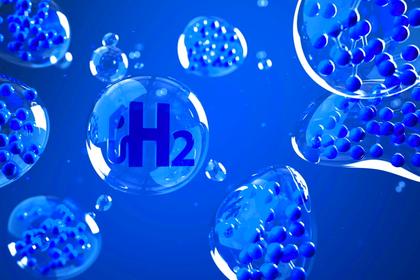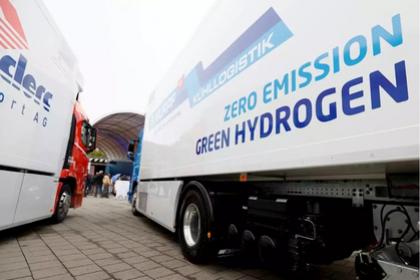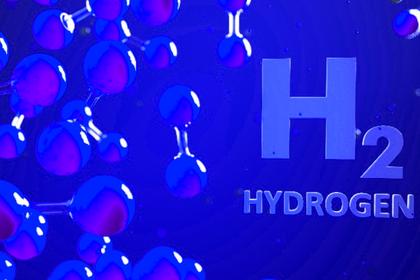
NUCLEAR HYDROGEN FOR CLIMATE
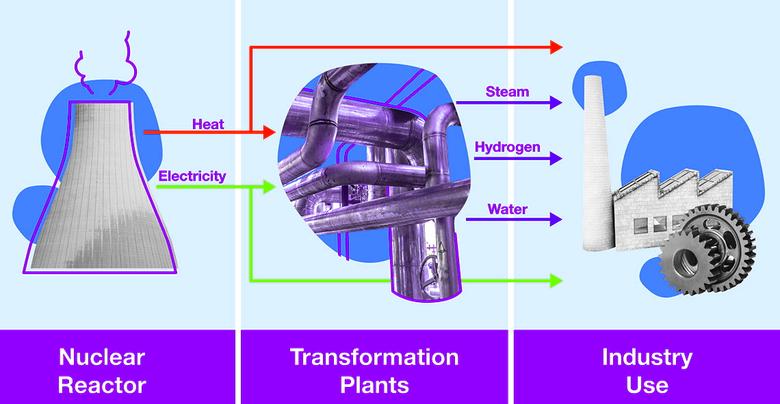
IAEA - MAY 5 2022 - Hydrogen is expected to play a central role in achieving climate change goals while helping to secure supplies of reliable clean energy worldwide. But with almost all hydrogen currently generated using fossil fuels, shifting to clean production by nuclear power and renewables is urgently needed. That is a challenging prospect, requiring the creation of a new industrial base and supply chains.
Currently, hydrogen is used in industrial processes ranging from producing synthetic fuels and petrochemicals to manufacturing semiconductors and powering fuel cell electric vehicles. In order to decrease the environmental impact of the annual production of over 70 million tonnes of hydrogen, some countries are looking to renewables such as solar and wind as well as nuclear power as a replacement for fossil fuels.
To speed up greening of the emerging hydrogen economy, the IAEA last month launched an initiative to develop a roadmap for the commercial deployment of hydrogen production using nuclear energy. The initiative brings together decision makers, designers, project managers and operators to share the latest advances in national strategies and technologies and to identify technical readiness for different technologies of hydrogen production using nuclear energy. The initiative will culminate in a roadmap guiding document, to provide countries with a tool for evaluating, planning and strategizing the development of nuclear hydrogen projects.
Hydrogen, the most abundant chemical element in the universe, is an energy carrier that emits only water vapour and heat when burned with pure oxygen. It can be stored in large quantities and is more energy efficient than burning fossil fuels. As such, it is a potential replacement for fossil fuels in heavy CO2 emitting industries such as steel and chemical production, cement manufacturing and long-distance transport. Known as the ‘hard-to-abate’ sectors, they account for about 30% of all global CO2 emissions and are difficult to decarbonise because either the technologies do not yet exist or are currently uneconomical.
“Today the vast majority of hydrogen needed across industries is manufactured using fossil fuel technologies (primarily natural gas), but nuclear energy has the potential to deliver both the electricity and the heat needed for hydrogen production in a sustainable, low carbon and cost-effective manner,” said Alina Constantin, an IAEA nuclear engineer and co-leader of the project. “However, several challenges related to technology, economics, safety and licensability, as well as policy support and stakeholder involvement need to be addressed over the next decade, demonstrating feasibility and allowing the shift to commercial scale production, if nuclear is to play a role in the production of hydrogen for the clean energy transition.”
Producing clean hydrogen using nuclear power has historically faced cost barriers, but that is now changing amid a global energy crisis making fossil fuels significantly more expensive and their global supply less secure.
A recent IAEA FRAMES modelling analysis found that when natural gas prices rise above $20 per million British thermal units (BTUs), the optimal method of hydrogen production is electrolysis powered by a mix of nuclear and renewables. (In the European Union, natural gas has been recently trading at around $30 per million BTUs.) “The analysis also found that hydrogen production powered by heat from advanced technologies such as high temperature gas cooled reactors (HTGRs) was highly competitive in those price scenarios. HTGRs are under development in several countries and prototypes are already operating in China and Japan,” said Francesco Ganda, the IAEA Technical Lead for Non-Electric Applications and lead author of the analysis.
Interest in clean hydrogen is growing across the world, with specific interest in using nuclear power. Some 28 countries and four international organizations joined the IAEA roadmap initiative at its launch in Vienna last month to discuss their nuclear hydrogen plans or projects. These include demonstrations of hydrogen production using existing reactors as well as plans using advanced reactors such as small modular reactors to increase efficiency and allow for scaling up production.
In India, the government this year announced a commercial hydrogen roadmap with a focus on renewable and biomass derived hydrogen. But since the demand for hydrogen is expected to rise fivefold by the mid-2030s, studies and research are being carried out to develop a business case to include nuclear in the country’s system for producing low carbon hydrogen.
“Hydrogen is a major component of the United States’ plan to decarbonize the country’s industrial sector, which accounts for a third of CO2 emissions”, Richard Boardman of Idaho National Laboratory said at the meeting. “Recent federal US legislation has allocated US$ 9.5 billion in funding for Regional Clean Hydrogen Hubs, a Clean Hydrogen Electrolysis Program and Clean Hydrogen Manufacturing and Recycling Initiatives.” US Department of Energy assessments suggest that hydrogen demand could rise tenfold from the current volume, with nuclear energy potentially producing up to 15% of this total demand.
“The future hydrogen economy is also a hot topic in the European Union,” said Andrei Goicea, Policy Director of FORATOM, the trade association representing the European nuclear industry. “However, while there is a push from some countries for producing electrolysed hydrogen using low carbon technologies, the case for nuclear may be hampered by EU investment guidelines that label nuclear energy as a transition technology,” he said.
“The key to success for nuclear-produced hydrogen will be finding the right opportunities that combine a strong business case and nuclear electricity and heat from existing or new nuclear power plants with applications that offer significant decarbonizing potential,” Ian Castillo of Canadian Nuclear Laboratories said. “Wherever possible, existing infrastructure such as natural gas pipelines and repurposed coal-fired plant sites should be used.”
IAEA Activities on Hydrogen
The IAEA provides support to countries interested in hydrogen production through initiatives including coordinated research projects (CRPs) and technical meetings. It has also developed the Hydrogen Economic Evaluation Programme (HEEP), a tool for assessing the economics of large-scale hydrogen production via nuclear energy. The Agency has also led a CRP on Examining the Technoeconomics of Nuclear Hydrogen Production, and is concluding a follow-up CRP on Assessing Technical and Economic Aspects of Nuclear Hydrogen Production for Near-term Deployment.
-----
Earlier:
